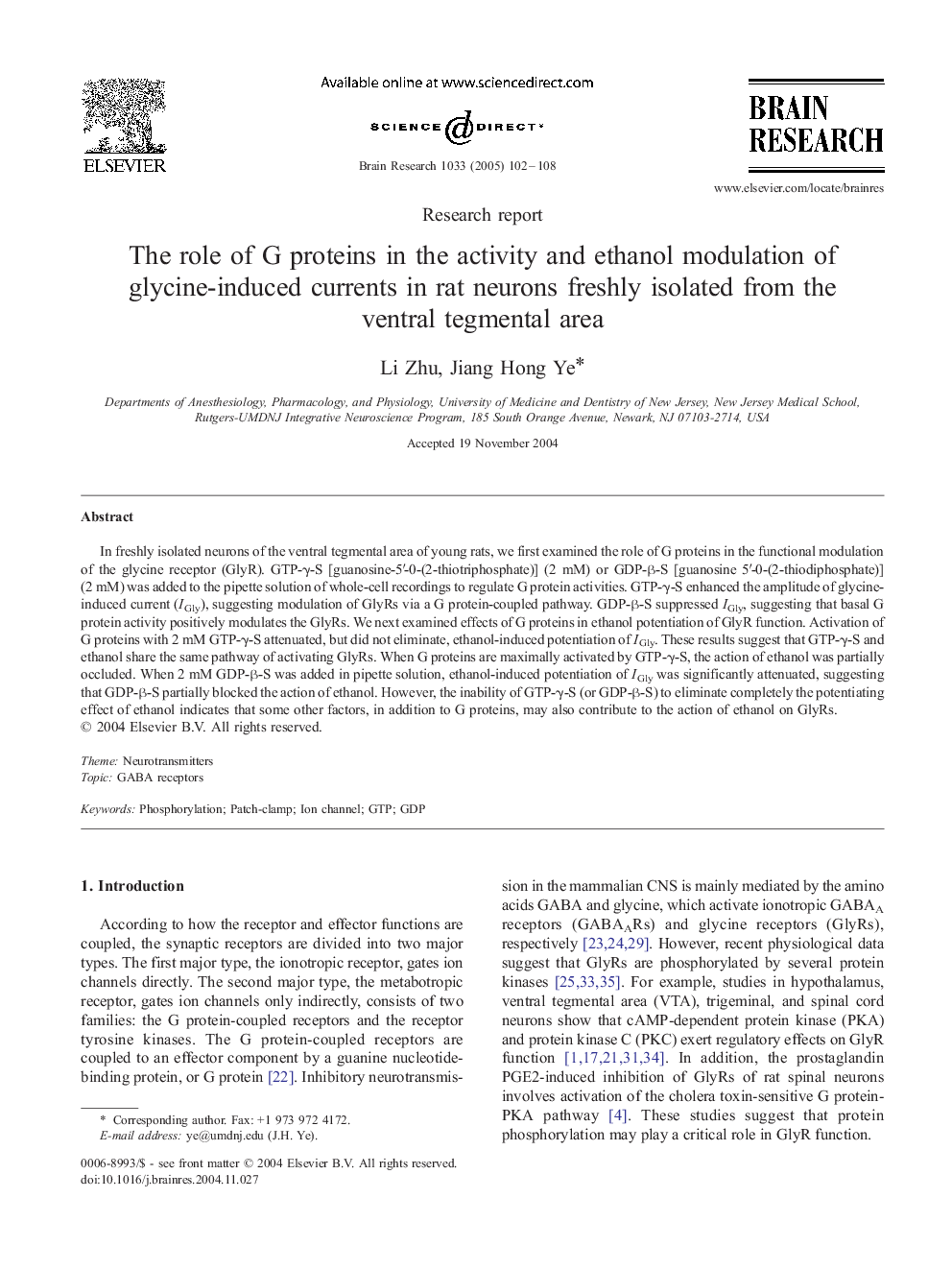| کد مقاله | کد نشریه | سال انتشار | مقاله انگلیسی | نسخه تمام متن |
|---|---|---|---|---|
| 9416760 | 1292982 | 2005 | 7 صفحه PDF | دانلود رایگان |
عنوان انگلیسی مقاله ISI
The role of G proteins in the activity and ethanol modulation of glycine-induced currents in rat neurons freshly isolated from the ventral tegmental area
دانلود مقاله + سفارش ترجمه
دانلود مقاله ISI انگلیسی
رایگان برای ایرانیان
کلمات کلیدی
موضوعات مرتبط
علوم زیستی و بیوفناوری
علم عصب شناسی
علوم اعصاب (عمومی)
پیش نمایش صفحه اول مقاله

چکیده انگلیسی
In freshly isolated neurons of the ventral tegmental area of young rats, we first examined the role of G proteins in the functional modulation of the glycine receptor (GlyR). GTP-γ-S [guanosine-5â²-0-(2-thiotriphosphate)] (2 mM) or GDP-β-S [guanosine 5â²-0-(2-thiodiphosphate)] (2 mM) was added to the pipette solution of whole-cell recordings to regulate G protein activities. GTP-γ-S enhanced the amplitude of glycine-induced current (IGly), suggesting modulation of GlyRs via a G protein-coupled pathway. GDP-β-S suppressed IGly, suggesting that basal G protein activity positively modulates the GlyRs. We next examined effects of G proteins in ethanol potentiation of GlyR function. Activation of G proteins with 2 mM GTP-γ-S attenuated, but did not eliminate, ethanol-induced potentiation of IGly. These results suggest that GTP-γ-S and ethanol share the same pathway of activating GlyRs. When G proteins are maximally activated by GTP-γ-S, the action of ethanol was partially occluded. When 2 mM GDP-β-S was added in pipette solution, ethanol-induced potentiation of IGly was significantly attenuated, suggesting that GDP-β-S partially blocked the action of ethanol. However, the inability of GTP-γ-S (or GDP-β-S) to eliminate completely the potentiating effect of ethanol indicates that some other factors, in addition to G proteins, may also contribute to the action of ethanol on GlyRs.
ناشر
Database: Elsevier - ScienceDirect (ساینس دایرکت)
Journal: Brain Research - Volume 1033, Issue 1, 1 February 2005, Pages 102-108
Journal: Brain Research - Volume 1033, Issue 1, 1 February 2005, Pages 102-108
نویسندگان
Li Zhu, Jiang Hong Ye,